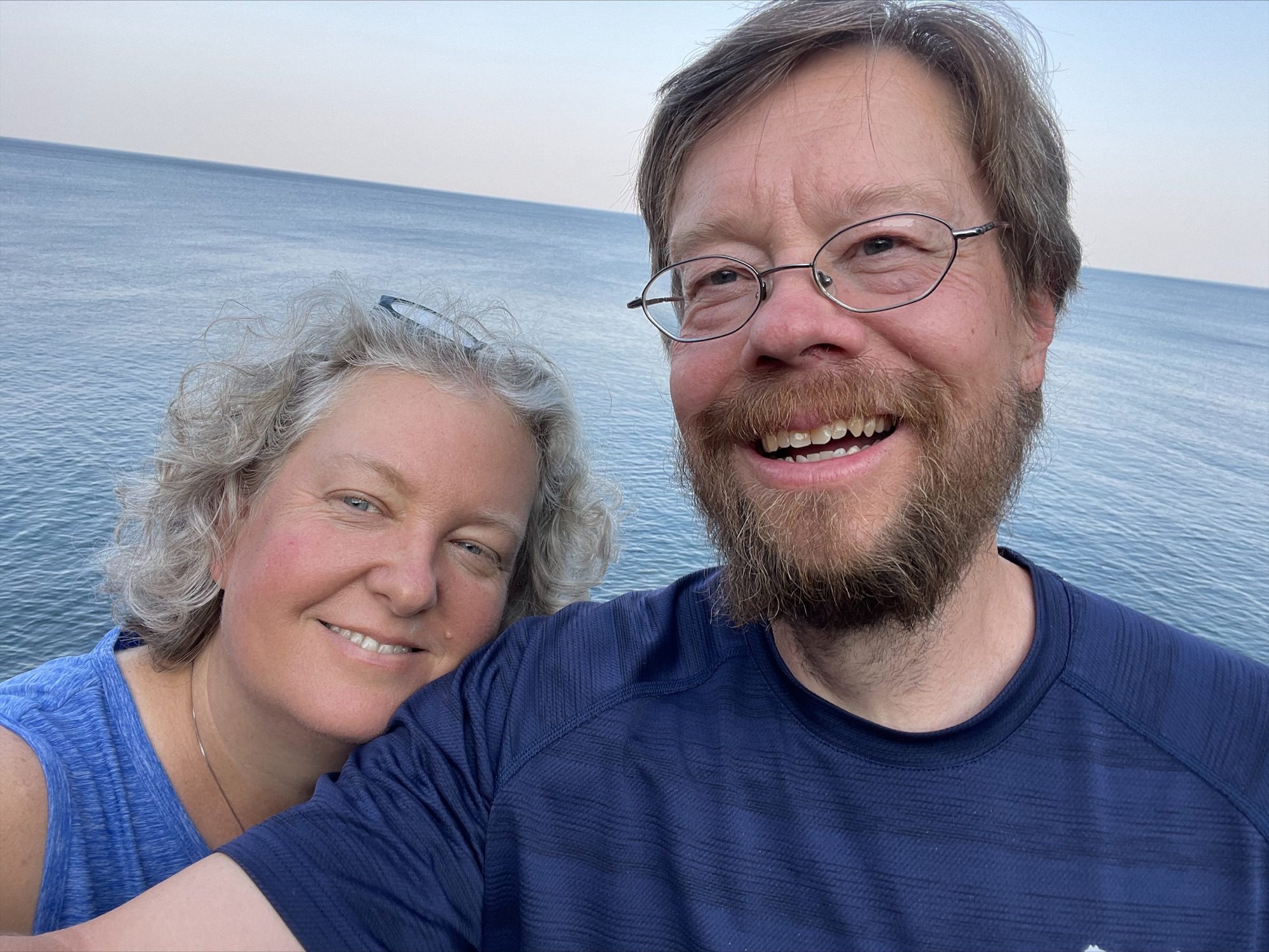Blood donor Heather experiences the patient side of transfusions

“Donating blood may have saved my life …”
Heather Galindo became a consistent blood donor with Carter BloodCare in 2018.
The Dallas resident found donating regularly to be an easy way to have a positive effect in the lives of others. Her universal and much-needed blood type – O-negative – was also just what area doctors ordered for treating any patient in critical need.
“It ended up becoming an important appointment every couple of months because it just made me feel good,” she said.
Like many blood donors, however, Heather never anticipated being on the other side of the process. The first step in her journey from donor to transfusion recipient began with a visit to Carter BloodCare.
In her own words, this is Heather’s story:
When I went to my regular donor center in January 2021, my hemoglobin was too low. I went home and ate as iron-rich a diet as I could for a couple of weeks; still too low.
I tried again a few days later and it was still low. The attendant asked if I’d felt fatigued lately; come to think of it, I had, but I’m also fairly low energy by nature, so sometimes it’s hard to tell the difference.
I wasn’t scheduled for my annual physical until June, but this prompted me to go to my doctor, who ran a complete blood count (CBC) workup. My hemoglobin and white blood cells were low, and my platelets were well below normal. So, off to the hematologist I went.
This was a pretty scary time, waiting to find out if I had some kind of blood cancer or who knows what. My hematologist did a bone marrow biopsy and more blood tests, determining I had aplastic anemia, where the bone marrow stops making all types of blood cells. Thanks to my commitment to blood donation, we caught it early.
Finding out I had AA while it was still in the early stages meant I had a lot of time to learn about it, understand treatment options, and start to adjust my life around the disease. Most people don’t know they have it until they’re being rushed to the ER due to bleeding (from low platelets) or have an infection that can’t be controlled (due to low white blood cells).
Over the summer, I received more than a dozen blood transfusions, and then several blood and platelet transfusions during and after my treatment, about 20 transfusions in total.
Because aplastic anemia is so rare (about two out of every 1 million people in the United States are diagnosed each year), I transferred to a specialist, who determined I had progressed to severe aplastic anemia and it was time to treat.
The first line of treatment is a therapy called anti-thymocyte globulin (ATG), which requires you to be in the hospital for about a week to get an infusion derived from horses. This and other medications work in tandem to reset the bone marrow and hopefully stop it from attacking itself. It has about an 80% success rate with a 30% relapse rate within the first few years, essentially a 50% success rate. If that fails, it’s on to a bone marrow transplant, which, while it is a cure, is much more serious.
I had ATG the week of Thanksgiving 2021 and it was a tough road, but so far it seems to be working. I feel great, my blood numbers are very close to normal, and, while I’m still on a medication that suppresses my immune system, I’m tapering off of it and my numbers are holding.
Of course, because blood donations were so important to my well-being and recovery through this process, I was pounding the drum at every opportunity to get friends and family to become blood donors. I had several friends who donated for the first time and found it to be not nearly as scary as it seemed, and others who had donated in the past and picked it back up again. Seeing them do this in my honor still brings tears to my eyes.
But best of all is my husband George, who has a lifelong terror of getting blood drawn at the doctor. Yet one concrete way he could help was to overcome his fear and become a blood and platelet donor. He now donates regularly, usually platelets, and the staff members at our local donor center are so kind and supportive.
I’m so grateful for blood banks: as a donor, because it alerted me to a potentially deadly problem well before I would have known about it otherwise, and because when I needed blood and platelets myself, they were there for me every single time. That’s no small feat.
My endless gratitude goes out to donors and everyone involved in the collection and distribution process.
You can make a lifesaving difference by donating blood, platelets or plasma. Make an appointment by calling Carter BloodCare at 800-366-2834 today.
Your experience as a donor or recipient can save lives by motivating others to donate. To share your story, please visit our Tell Us Your Story webpage.

